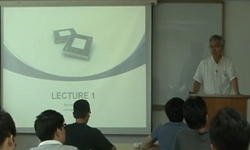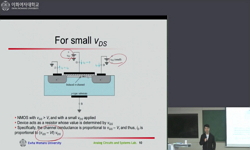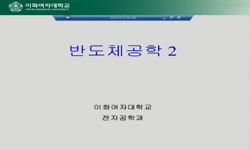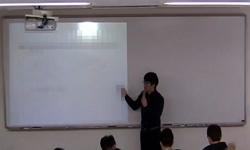As complementary metal-oxide semiconductor (CMOS) continues to scale down deeper into the nanoscale, various device non-idealities cause the I-V characteristics to be substantially different from well-tempered metal-oxide semiconductor field-effect tr...
http://chineseinput.net/에서 pinyin(병음)방식으로 중국어를 변환할 수 있습니다.
변환된 중국어를 복사하여 사용하시면 됩니다.
- 中文 을 입력하시려면 zhongwen을 입력하시고 space를누르시면됩니다.
- 北京 을 입력하시려면 beijing을 입력하시고 space를 누르시면 됩니다.
https://www.riss.kr/link?id=A101056237
- 저자
- 발행기관
- 학술지명
- 권호사항
-
발행연도
2011
-
작성언어
English
- 주제어
-
등재정보
SCOPUS,KCI등재,ESCI
-
자료형태
학술저널
- 발행기관 URL
-
수록면
175-188(14쪽)
-
KCI 피인용횟수
2
- 제공처
- 소장기관
-
0
상세조회 -
0
다운로드
부가정보
다국어 초록 (Multilingual Abstract)
As complementary metal-oxide semiconductor (CMOS) continues to scale down deeper into the nanoscale, various device non-idealities cause the I-V characteristics to be substantially different from well-tempered metal-oxide semiconductor field-effect transistors (MOSFETs). The last few years witnessed a dramatic increase in nanotechnology research, especially the nanoelectronics. These technologies vary in their maturity. Carbon nanotubes (CNTs) are at the forefront of these new materials because of the unique mechanical and electronic properties. CNTFET is the most promising technology to extend or complement traditional silicon technology due to three reasons: first, the operation principle and the device structure are similar to CMOS devices and it is possible to reuse the established CMOS design infrastructure. Second, it is also possible to reuse CMOS fabrication process. And the most important reason is that CNTFET has the best experimentally demonstrated device current carrying ability to date. This paper discusses and reviewsthe feasibility of the CNTFET's application at this point of time in integrated circuits design by investigating different types of circuit blocks considering the advantages that the CNTFETs offer.
참고문헌 (Reference)
1 R. C. Baumann, 1 (1): 2001
2 B. C. Paul, 54 (54): 2007
3 M. Horowitz, 9-, 2005
4 K. Roy, 91 (91): 2003
5 S. Lin, 9 (9): 2010
6 E. Grossar, 41 (41): 2006
7 E. Seevinck, 22 (22): 1987
8 G. Cho, 11 (11): 201
9 C. Geunho, 289-, 2010
10 A. Rahman, 50 (50): 2003
1 R. C. Baumann, 1 (1): 2001
2 B. C. Paul, 54 (54): 2007
3 M. Horowitz, 9-, 2005
4 K. Roy, 91 (91): 2003
5 S. Lin, 9 (9): 2010
6 E. Grossar, 41 (41): 2006
7 E. Seevinck, 22 (22): 1987
8 G. Cho, 11 (11): 201
9 C. Geunho, 289-, 2010
10 A. Rahman, 50 (50): 2003
11 A. Akturk, 6 (6): 2007
12 H. Hashempour, 25 (25): 2008
13 Y. M. Lin, 4 (4): 2005
14 J. Deng, 54 (54): 2007
15 K. K. Kim, 17 (17): 2009
16 A. Raychowdhury, 4 (4): 2005
17 S. Lin, 435-, 2009
18 F. Ricci, L, 16-18, 2005
19 K. K. Kim, 27-30, 2007
20 M. Mukaidono, 35 (35): 1986
21 T. Araki, 27-29, 1998
22 A. Heung, 20 (20): 1984
23 D. A. Rich, 35 (35): 1986
24 Y. Yasuda, 21 (21): 1986
25 S. Lin, 10 (10): 2011
26 J. Appenzeller, 96 (96): 2008
27 J. Deng, 54 (54): 2007
28 A. Bachtold, 294 (294): 2001
29 S. Lin, 168-, 2008
30 Y. Li, 105 (105): 2001
31 Y. Ohno, 84 (84): 2004
32 J. Guo, "eprint arXiv:cond-mat/0309039"
33 Stanford University Nanoelectronics Group, "Stanford University CNFET Model"
34 A. P. Dhande, "Sciences of Electronic, Technologies of Information and Telecommunicati" 2005
35 P. C. Balla, "IEEE J Solid-State Circuits SC-19, 739 (1984)" 19 (19): 1984
36 A. P. Chandrakasan, "F. Fox, Design of High- Performance Microprocessor Circuits" IEEE Press 290-296, 2001
37 T. P. Haraszti, "CMOS Memory Circuits" Kluwer Academic Publishers 2000
38 Nanoscale Integration and Modeling (NIMO) Group, "Berkeley Predictive Technology Model"
동일학술지(권/호) 다른 논문
-
- 한국전기전자재료학회
- 김인성
- 2011
- SCOPUS,KCI등재,ESCI
-
Optical Characteristics of a Flexible Back-Light Unit with Plasma Discharge Clusters
- The Korean Institute of Electrical and Electronic Material Engineers
- Goo, Gyo-Uk
- 2011
- SCOPUS,KCI등재,ESCI
-
Fabrication and Electrical Properties of PZT/BFO Multilayer Thin Films
- The Korean Institute of Electrical and Electronic Material Engineers
- Jo, Seo-Hyeon
- 2011
- SCOPUS,KCI등재,ESCI
-
- The Korean Institute of Electrical and Electronic Material Engineers
- Jeong, Tae-Hoon
- 2011
- SCOPUS,KCI등재,ESCI
분석정보
인용정보 인용지수 설명보기
학술지 이력
| 연월일 | 이력구분 | 이력상세 | 등재구분 |
|---|---|---|---|
| 2023 | 평가예정 | 해외DB학술지평가 신청대상 (해외등재 학술지 평가) | |
| 2020-01-01 | 평가 | 등재학술지 유지 (해외등재 학술지 평가) |  |
| 2011-01-01 | 평가 | 등재학술지 유지 (등재유지) |  |
| 2009-01-01 | 평가 | 등재학술지 유지 (등재유지) |  |
| 2006-01-01 | 평가 | 등재학술지 선정 (등재후보2차) |  |
| 2005-05-30 | 학회명변경 | 영문명 : 미등록 -> The Korean Institute of Electrical and Electronic Material Engineers |  |
| 2005-05-30 | 학술지명변경 | 한글명 : Transactions on Electrical and Electroni -> Transactions on Electrical and Electronic Materials |  |
| 2005-01-01 | 평가 | 등재후보 1차 PASS (등재후보1차) |  |
| 2003-01-01 | 평가 | 등재후보학술지 선정 (신규평가) |  |
학술지 인용정보
| 기준연도 | WOS-KCI 통합IF(2년) | KCIF(2년) | KCIF(3년) |
|---|---|---|---|
| 2016 | 0.08 | 0.08 | 0.1 |
| KCIF(4년) | KCIF(5년) | 중심성지수(3년) | 즉시성지수 |
| 0.1 | 0.11 | 0.239 | 0.07 |






 ScienceON
ScienceON







